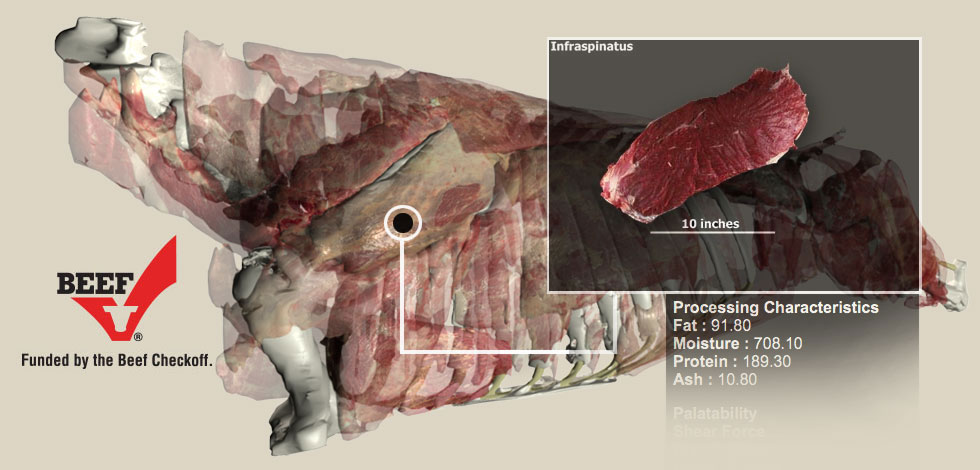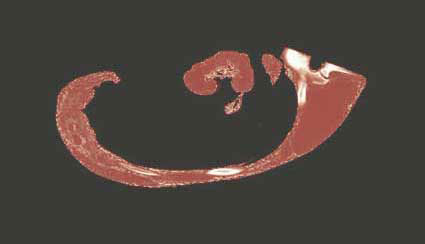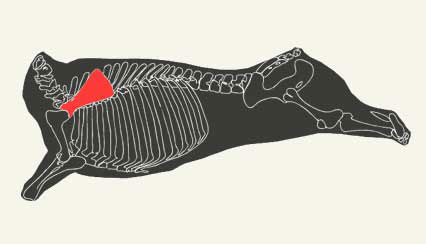Bovine Myology

Processing Characteristics and Consumer Acceptability
The beef carcass is made up of over a hundred different muscles. These muscles have different properties which affect processing characteristics and consumer acceptability. There has been a continued trend to separate muscles, based on these characteristics, to better market them. Today the majority of the cuts found in the retail meat counter are boneless, therefore providing the need for knowledge of the musculature of the beef animal.
Research has recently been conducted to profile the physical and chemical characteristics of beef muscles to more fully realize their value. This information will aid the processor in development and preparation of new products based on the inherent properties of each muscle. Additional information on each muscle was collected including: name, origin, insertion, action, innervation, and blood supply. This is included to assist in the understanding of muscular and skeletal anatomy. There were eleven different sections developed to view the muscular and skeletal anatomy of the carcass.
Beef Stats
The U.S. plays a major role in the beef industry!
A 3oz serving of beef supplies 50% of the Daily Value for protein.
The Infraspinatus muscle of the Flat Iron Steak is the second most tender muscle in the beef carcass.
More than 130 million pounds of Flat Iron and Petite Tender combined were sold in retail and foodservice in 2013.

All content found on this site is checkoff-funded unless indicated otherwise.

